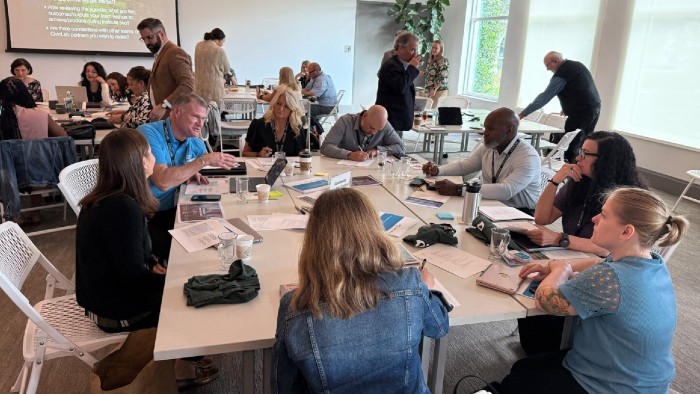
Data Tools Help Stakeholders Identify and Support Rural and Rural Serving Institutions
 Defining and identifying institutions that support rural learners nationwide has long been challenging. Policy makers, education leaders, practitioners and advocates need clear metrics and tools to better understand the rural postsecondary landscape, including where rural institutions are located and how many are serving rural learners. These institutions play a vital role in the education and employment of millions of Americans, many of whom are learners from low-income, diverse backgrounds.
Defining and identifying institutions that support rural learners nationwide has long been challenging. Policy makers, education leaders, practitioners and advocates need clear metrics and tools to better understand the rural postsecondary landscape, including where rural institutions are located and how many are serving rural learners. These institutions play a vital role in the education and employment of millions of Americans, many of whom are learners from low-income, diverse backgrounds.
Recently, Ascendium funded two projects resulting in publicly available, interactive data tools to identify these institutions. Each provides different, but complementary resources for stakeholders. According to Dr. Nick Hillman of the University of Wisconsin-Madison’s Student Success Through Applied Research (SSTAR) Lab, “Both projects help advance conversations that have long taken place, and now we are applying creative and accessible data tools to help advance new knowledge in the rural space.” The projects are the SSTAR Lab Mapping Rural Colleges project and the Alliance for Research on Regional Colleges’ (ARRC’s) Our Nation’s Rural Serving Postsecondary Institution project.
The SSTAR Lab Mapping Rural Colleges project cast a wide net to identify campuses in rural locations. It defined “rural” and identified institutions by combining data from a range of sources resulting in a single dataset. This includes a diverse range of venues for postsecondary learning, such as extension offices, corrections facilities and military bases. These educational settings can all be explored using the SSTAR Lab’s Mapping Rural Colleges tool. Their tool, as well as the Mapping Rural Colleges and their Communities report on demographic shifts and enrollment trends, were also featured in a December 2021 Rural Matters podcast with Dr. Hillman. Identification of these institutions and enrollment trends will help stakeholders better understand how to allocate resources that support the success of rural learners.
“The team at SSTAR did a fantastic job mapping institutions and their additional locations onto commuter zones across the country,” says Erica Lee Orians, who in her role as the executive director of the Michigan Center for Student Success has been using the tool. “I especially appreciate the ability to explore migration and education attainment data along with demographic and economic indicators in each commuter zone. Their research has informed our work in Michigan to build transfer pathways from applied associate degrees to bachelor completion programs.”
The ARRC project focuses on establishing a metric that accounts for institutions that are attended by rural learners and deliver rural-focused programs. These institutions may or may not be rurally located and are called rural serving institutions (RSIs). One important finding of the ARRC project report, Introducing Our Nation’s Rural Serving Institutions, is that RSIs, counter to some stereotypes that rural communities mean mostly white populations, are in fact demographically diverse. Understanding RSIs is important; they play a critical role in serving their communities, as ARRC researchers discussed in a March 2022 Rural Matters podcast reviewing their landmark report.
“Not only will policymakers and institutions benefit from ARRC’s RSI metric, but it also increases Ascendium’s own understanding of the rural postsecondary education landscape and the institutions that are supporting rural learners and communities,” said Kirstin Yeado, program officer at Ascendium. “The report and interactive map are foundational tools that will enable future rural postsecondary education research and help philanthropic organizations like Ascendium target investments that impact the success of rural learners from low-income backgrounds.”


